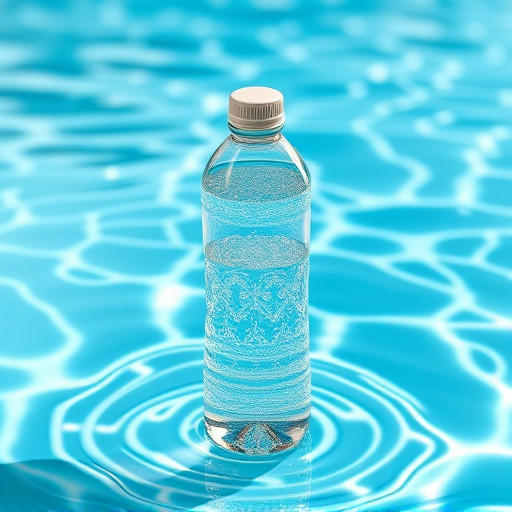Luxury water is a premium, lifestyle product emphasizing quality over quantity, sourced from pristine locations, purified rigorously, and enhanced for unique taste. Ice water offers immediate cooling and potential health benefits, though scientific evidence varies. Arctic drinking water, renowned for exceptional purity, supports hydration, well-being, energy levels, and sensitive digestive systems. Luxury water production involves advanced technologies and precise quality control, preserving natural mineral balance for optimal hydration.
Introduction: Unveiling the Mysteries of Luxury Hydration
In the realm of refined living, one often hears terms like ‘luxury water’ or ‘arctic drinking water’, but what do these realmente entail? This article aims to explore and demystify these unique hydration concepts. We will delve into the definitions and sources of luxury water, examine the appeal of ice water beyond its refreshing quality, and uncover the remarkable purity and health advantages of arctic waters. Additionally, we’ll explore the scientific methods employed to create and ensure the exceptional qualities of these specialized drinking waters.
- Understanding Luxury Water: Definitions and Sources
- Ice Water: Cool and Refreshing, But What's in It?
- Arctic Drinking Water: Purity and Health Benefits
- The Science Behind Luxury and Pure Water Production
Understanding Luxury Water: Definitions and Sources

Luxury water is an exclusive term referring to bottled or extracted waters known for their exceptional purity, source origin, and often enhanced mineral content. It’s more than just a simple hydration choice; it’s a lifestyle symbol, catering to those who seek premium experiences in everyday essentials. The concept stems from the idea that access to clean, safe drinking water should be treated as a luxury, emphasizing the value of quality over quantity.
These waters typically originate from pristine sources like glacial melts, spring-fed wells, or deep underground aquifers. They undergo rigorous purification processes to ensure they meet the highest standards set by regulatory bodies for safety and purity. Some brands even go further, enhancing the water’s mineral profile through controlled evaporation and distillation methods, creating a unique taste that appeals to discerning consumers.
Ice Water: Cool and Refreshing, But What's in It?

Ice water has long been revered for its ability to cool down the body and refresh the senses. Many people prefer it over regular water, especially during hot weather or after intense physical activity, as it offers an instant sense of relief. The chilly temperature can help lower body temperature, providing a quick boost of hydration and a refreshing feeling.
However, beyond the sensory experience, there is growing interest in understanding what, if any, unique benefits ice water provides. While regular water is essential for hydration and optimal bodily functions, ice water’s allure lies in its potential additional perks. Some suggest that consuming cold water may slightly increase metabolism and help suppress appetite, making it a popular choice among those aiming to maintain or lose weight. Yet, scientific evidence on these effects remains mixed, and staying hydrated with any form of water is paramount for overall health.
Arctic Drinking Water: Purity and Health Benefits

Arctic drinking water is renowned for its exceptional purity, sourced from some of the world’s most pristine regions. This cold, clear water travels through glaciers and ice sheets, picking up minimal impurities during its lengthy journey. The result is a product that is free from contaminants, chemicals, and even trace minerals found in regular tap water. Its pure state makes it an attractive choice for health-conscious individuals seeking a natural way to hydrate.
The health benefits associated with Arctic drinking water are numerous. Without the presence of pollutants, this water offers a more gentle option for hydration, which can be particularly beneficial for those with sensitive digestive systems or specific dietary restrictions. Many advocate for its hydrating properties, claiming it supports overall well-being and enhances energy levels. Additionally, its cold nature provides a refreshing sensation, making it a popular choice during hot weather or intense physical activities.
The Science Behind Luxury and Pure Water Production

The production of luxury water, often referred to as pure or arctic drinking water, is a meticulous science that goes far beyond simple purification. It involves advanced technologies and strict quality control measures to ensure every sip offers unparalleled purity and taste. This process begins with source water selection, where springs nestled in pristine, untouched environments are carefully chosen. Once sourced, the water undergoes multiple stages of filtration, using materials like activated carbon, reverse osmosis membranes, and UV light for disinfection. These methods remove impurities, including bacteria, chemicals, and heavy metals, leaving behind a product that is not just clean but also rich in natural minerals essential for hydration.
The art of luxury water production extends to temperature control, with ice water being chilled to specific, precise levels. This isn’t merely about achieving a cold taste; it’s about preserving the delicate balance of dissolved solids and gases that contribute to its refreshing quality. Arctic water, known for its extreme purity, often undergoes additional processes like carbon filtration and sub-zero freezing to eliminate even the tiniest particles, resulting in a product that is truly exceptional in terms of both taste and health benefits.
In exploring luxury, ice, and arctic drinking waters, we’ve uncovered unique aspects that define their quality. From the meticulous sourcing and production processes to their distinct properties, each type offers a specialized experience. Understanding these variations not only satisfies curiosity but also empowers consumers to make informed choices based on personal preferences and health considerations. By delving into these topics, we hope to encourage a deeper appreciation for the role water plays in our lives and the diverse ways it can be enjoyed.
